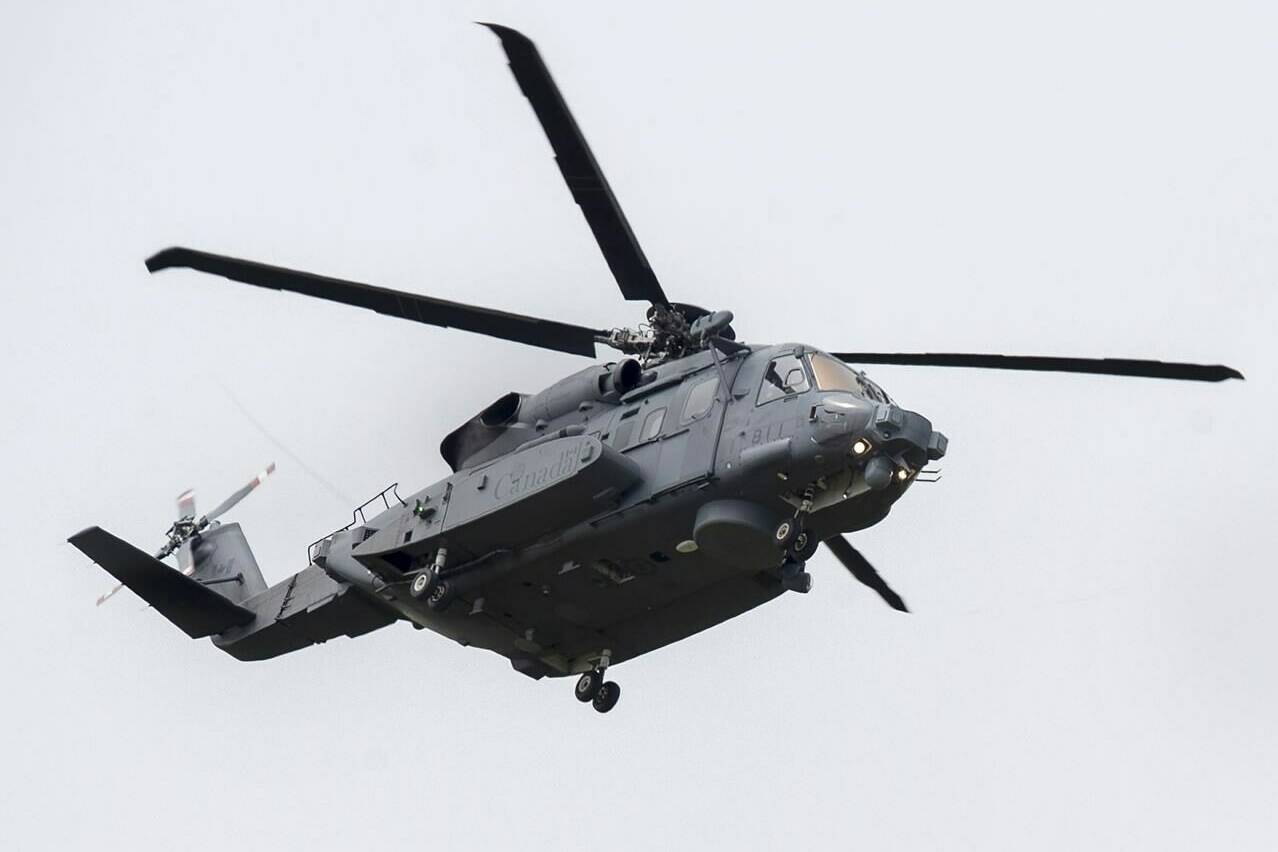A still-unresolved software problem identified as the main cause of a deadly military helicopter crash off the coast of Greece in 2020 will end up being fixed on Ottawa’s dime — at a yet-to-be-determined cost and time.
The Defence Department and U.S.-based Sikorsky Aircraft say they have agreed on a plan to fix the autopilot problem that allows the CH-148 Cyclone’s computer to override the controls of its human pilots in certain situations.
But nearly three years after the glitch resulted in a Cyclone plunging into the Ionian Sea, killing all six Canadian Armed Forces members on board, it still remains unclear when that solution will be implemented.
“Now that the technical requirements have been agreed upon by all parties, Sikorsky and its subcontractors have proposed an initial implementation plan for Canada’s review,” Defence Department spokeswoman Jessica Lamirande said in an email.
“Discussions on this plan are ongoing, so it’s too early to discuss cost and schedule. We hope to have the plan finalized in the coming months, and will provide more details at that time.”
One thing that has been finalized, however, is that Canada will foot the bill.
Lamirande said the planned software upgrades fall outside the scope of the government’s existing $9-billion contract with Sikorsky for the delivery and maintenance of 28 Cyclones, which was signed in 2004.
“We are committed to continuously improving the safety of our fleets and those who operate and fly in them,” she said.
Sikorsky spokesman John Dorrian said the company, which has yet to deliver all 28 Cyclones nearly 20 years after the original contracts were signed, is now waiting for a new contract for the work.
“Following a contract award from DND, Sikorsky will complete development, flight test and upload of the enhancements to the CH-148 fleet,” Dorrian said in an email.
The federal government has faced calls for urgency since two internal military reviews identified the autopilot glitch as the primary cause of the deadly Cyclone crash on April 29, 2020.
The tragedy took the lives of Master Cpl. Matthew Cousins, Sub-Lt. Abbigail Cowbrough, Capt. Kevin Hagen, Capt. Brenden MacDonald, Capt. Maxime Miron-Morin and Sub-Lt. Matthew Pyke. It also shook the nation during some of the darkest days of the pandemic.
Military commanders have repeatedly suggested the problem isn’t serious, saying the Royal Canadian Air Force has developed protocols and procedures to avoid a repeat of that tragedy by training pilots to avoid certain manoeuvres.
“I’m very confident that we’re operating within that aspect, within a safe regime,” Air Force commander Lt.-Gen. Eric Kenny said in a recent interview. “Otherwise they wouldn’t be flying the aircraft.”
A number of Cyclones have been deployed overseas on Canadian warships in recent years, where they are primarily used for search-and-rescue missions, surveillance and anti-submarine missions. Kenny said the helicopters have excelled.
Yet there have been problems, including the discovery of tail cracks on nearly the whole of the fleet due to a design flaw. Sikorsky has agreed to cover the cost of those repairs, but they have yet to be implemented.
The 26 Cyclones that have been delivered by Sikorsky so far don’t have all the capabilities that the American company originally promised to include.
Former Sea King squadron commander Larry McWha described the Cyclone fleet’s autopilot issue as a serious software design flaw or “gremlin” given the potentially deadly consequences.
The fact the government is covering the bill for the autopilot fix suggests Ottawa is taking at least partial responsibility “for having specified, tested and approved the original design and control laws that led to the tragic loss of an aircraft and crew,” he added.
—Lee Berthiaume, The Canadian Press
RELATED: Fix to software problem behind naval helicopter crash needed ‘forthwith’: experts

